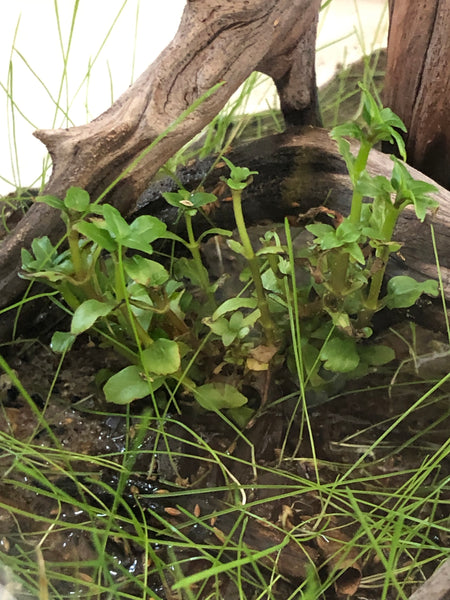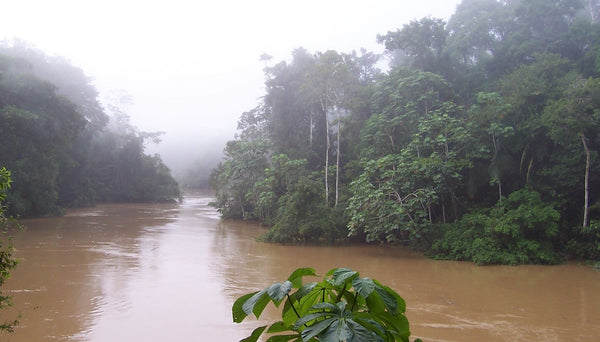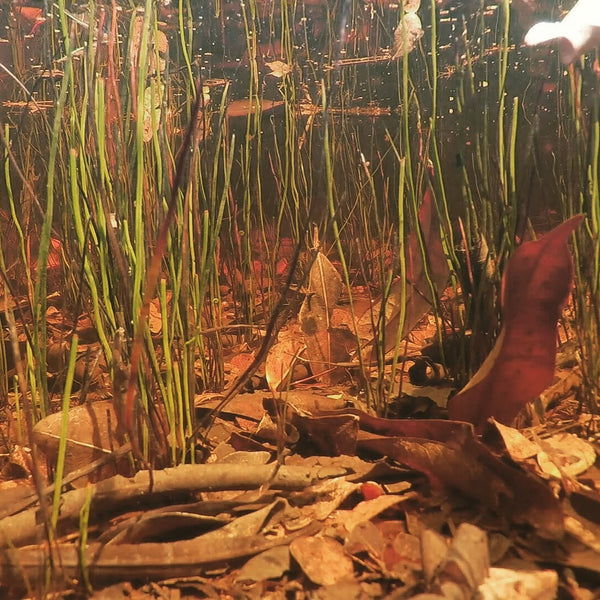- Continue Shopping
- Your Cart is Empty
Back to the varzea
As you are no doubt aware, we're obsessed with obscure (well, to the hobby, anyways...) aquatic habitats. And we've spent a lot of time observing, researching and studying these habitats and how to replicate them- functionally and aesthetically- in our tanks.
Among our absolute favorites are the flooded forests of South America- the igapo and the varzea. These unique habitats are fascinating, dynamic, and highly diverse ecosystems, which exist in both terrestrial and aquatic phases- both of which we can replicate in our own aquariums.

We've spent a ton of time talking about them- mostly about the igapo. However, the varzea habitats are equally dynamic and fascinating- well worthy of recreating them in our tanks. So, let's focus on the varzea today.
Varzea, the “whitewater”-inundated forest of South America, is very similar in structure to the terra firme forests (composed of layers of alluvial soil that were deposited as much as 2.5 million years ago). Such alluvial soils are rich in dead organic matter, which quickly decays and is recycled. When the nearby "whitewater" rivers overflow, these areas become aquatic habitats for weeks or months at a time.
The trees of the varzea tend to be significantly buttressed (which is likely an adaptation for the tree to remain anchored in the moist clay-rich soil), and typically have seeds with special water flotation mechanisms that enable them to be widely dispersed when the rivers of this region overflow seasonally- a valuable adaptation to such extreme environmental fluctuations.

And of course- in both igapo and varzea, there is a significant diversity of fishes!
In a comparative study of Amazonian fish diversity and density conducted by Henderson and Crampton in 1994, in nutrient poor blackwater igapó and richer whitewater várzea habitats in Brazil, the whitewater sampling sites were characterized by high turbidity and conductivity, and a pH of 6.6-6.9. By comparison, the blackwater sites had low turbidity, a very low conductivity, and a pH of 5.3-6.0.
The flooding often lasts for weeks and often, months- and the trees possess special biochemical adaptations to be able to survive the lack of oxygen in the substrate where their roots penetrate.

Of course, some trees do topple in torrential currents, or their branches fall into the water, are swept downstream, and accumulate in pockets, creating useful underwater habitats for fishes.
The formerly terrestrial environment is now transformed into an earthy, twisted, incredibly rich aquatic habitat, which fishes have evolved over eons to live in and utilize for food, protection, and spawning areas.

All of the botanical material-shrubs, grass, seeds, etc. become part of this aquatic milieu, too! Many of the species found in varzea have evolved survival strategies to endure this inundation period.
Trees such as the Rubber Tree (Hevea brazilensis) is a perfect example of a species which is clearly adapted to the varzea habitat, possessing seeds which can float for up to two months, and which form a significant part of the diet of certain larger fish of the region.
The seeds, along with fruit for the trees, after being consumed by fishes, are passed along throughout the forest. In fact, it is postulated by scientists that many of these seeds are required to pass through the gut of a fish before they will germinate!

As in the igapo, there is regular input of nutrient-rich sediment into the varzea, which is beneficial to the many low-lying shrubs found on the forest floors. This “understory layer”, as ecologists call it, is particularly lush, and quite rich in species of such plants as Gingers (Zingiberaceae) and Heliconias (Scitaminae). Hmm…something to think about when populating your varzea in its “dry” phase, huh?
Another interesting thing about Amazonian streams and flooded forest areas in general is that there is no significant "in situ" (in place) primary production, and that the fish populations that reside in them depend on what is known as "allochthonous input" (material that is imported into an ecosystem from outside of it) from materials like seed pods, fruits, blossoms, leaves, and dead wood from the surrounding forest.
So, how would you replicate this dynamic habitat in the aquarium?
Well, this is worthy of an entire podcast/blog post/video (and we are working on all of them as I write this!), but let's touch on the most basic of the details here- just to get you started...

For a várzea-themed aquarium, we'd say to start with a quality substrate, which represents the rich soils common to these forests. Like Nature Base "Varzea" by Tannin Aquatics! Yes, the long, LONG delayed "Nature Base" substrates will be debuting very soon (I know, we've said it before a few hundred times- we're really trying to get production smoothed-out and optimized prior to releasing them).
Just an aside: As we've learned, going "next level" and doing things other than just "slinging seed pods" is not so easy. Sourcing raw materials, formulation, testing, re-testing, and packaging are way more complicated! And we're developing several diverse, exotic new products at once...So we've been pretty busy around here! Thanks for your patience- they'll be well worth the wait, we promise!
Okay, commercial plug finished...

You should omit some of the more heavily "tint-producing" botanicals, and go with stuff like the more "durable" seed pods, like Mokha pods, Monkey Pots, etc. These not only impart less tannins into the water than leaves and such, many of them, such as Dysoxylum pods and the like, represent the fruits and such that accumulate in these waters. Your fishes will forage on and among them as they would with such materials in Nature.

A good chemical filtration media will counteract any tint imparted into the water by these materials, as well as the nutrients released by them. I mean, don't be fooled-you're gonna get some "tint" in the water, but not as much as if you're using lots of leaves and stuff like Catappa bark, etc.
It's about experimentation; studying, observing, and replicating a natural process in the aquarium...to the best of our capabilities. "Artistic liberties" are not only possible- they're welcome! So many iterations, interpretations, and experiments are possible here.

I'd use some nice pieces of wood to represent the buttressed roots of the trees found in these habitats.And of course, you can "plant" some terrestrial grasses and even some aquatic plants, creating the look and function in a more realistic manner.

Of course, you could also use riparian-type plants, like Sedges and such, which can tolerate- or even require immersion and very moist soils for long-term health and growth. Some species of these plants are indeed found in such temporal environments in Nature, so it goes without saying that you should experiment with them in the aquarium, too!
A lot to do here.
We cluster the idea of replicating these varzea habitats into our "umbrella" concept of the "Urban Igapo"- a fun way to play with these niche ecosystems in our aquariums...
The ongoing experimentation, the mental shifts that we've asked you to make, the "norms" of botanical-style aquarium "practice" that we've pushed here for a few years- all will come together to make the "Urban Igapo"experiment unique and enjoyable to a wide variety of hobbyists!

I really hope that today's brief review of the unique varzea habitat has given you a few ideas to help get started. Remember, the diversity of aquatic environments is legion, and there is virtually no limit to what you- the creative hobbyist- can achieve with some time, effort, and imagination!
Stay creative. Stay resourceful. Stay excited. Stay studious...
And Stay Wet.
Scott Fellman
Tannin Aquatics








Scott Fellman
Author